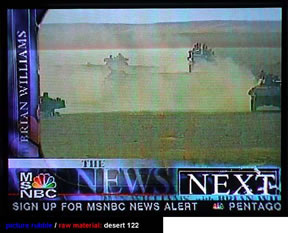
RAINER GANAHL
PICTURE RUBBLE
"Picture rubble / raw material" is what it is: photographed
television images and freeze-frames of electronic footage released from
news organization, media monopolies and the Pentagon. The content of the
images is the current "War on Terrorism:" the hunt for Bin Laden
and the bombing of Afghanistan. Frequently, what we see in the "live,",
"in depth," or "special" reports are bombed buildings,
tanks, airplanes, rubble, accompanied by the talking heads of the spin
doctors, who explain, justify and speculate on this war, its means and
measures.
While constitutional rights are suspended and massacres and war crimes
are shown on TV, dissent of any kind risks being interpreted as 'anti-American'
and thereby sympathetic to "terrorism." Terrorism has become
the new magic word in domestic and international politics. The victorious
images help to cement a view that monopolizes and streamlines public and
private opinions. Simplified and stereotypical reasoning predominates,
while the more complex and systemic political causes of the crisis remain
ignored. In this project I want to capture and freeze some of the TV-pictures
and keep them as a sort of public/private war archive for future viewing.
On their own, these images are fascinating: exotic landscapes and faces,
stunning violence and misery, high tech and primitive military equipment
and operations, veiled women, Bin Laden replays, "collateral damage,"
chaotic masses and protesters, brand name journalists, and regional experts.
Some images come from the battlefield, others originate in the studios
of prime time infotainment production.
My interest lies also on the interface of these electronic/digital images.
How are such images released? They are typically cleared by the Pentagon
or other (self-)censoring agencies. Stories packaged and served up to
our screens. The final pictures are composed of multiple layers of windows,
scrolling and fixed texts, mixed with a variety of logos. In fact, nearly
every broadcast, front line report or talk show special has a specific
name or brand: "A Region in Conflict; War in Afghanistan; War on
Terrorism; Update on the Taliban; The Hunt for Bin Laden; Anarchy in Afghanistan;
America Strikes Back; Who is Next; Live from Islamabad with Christiane
Amanpour; The Military Campaign" etc. There are even subtitles to
these titles and again sub-subtitles: "CNN Newsnight; Live; The Fate
of Saddam; New York; Washington." Next to these fixed titles, main
network logos and the logos of the current programs, we also get generic
news headlines scrolling across the screen at the bottom of the picture.
Photographed, freeze-framed, and converted into low-resolution pictures,
we become even more aware of the ironic and contradicting juxtaposition
of images and info-bites: Sports scores next to images of massacred Afghans;
the nation's "third largest petroleum company" with maps of
upcoming targets; "Human cloning researcher defends work" with
starving and freezing refugees; or "Capital Gang" with "7
killed in Palestine." To these compressed and text-laden images I
add another layer of text including the project title and a keyword. The
keywords are rather naive and oriented along a phenomenology of simple
appearances that ignores the seriousness of the facts behind these images.
They provide a false sense of order and simplicity to these catalogued
images of death, destruction and enforced justification.
This media war-material is made available here through a random slide
show in order to keep it available beyond the events which are moving
and altering the TV-output constantly. The discrepancy between the sophisticated
digital image of the satellite or cable info-world and the simplicity
of the area that is bombed out in a remote zone renders any questions
for justification irrelevant. It even destroys the possibility for an
accurate analysis. Those in charge of media, defense and oil monopolies
are unfortunately also in charge of "the truth" and the power
to define events and people.
Rainer Ganahl, New York, December 5, 2001
HOW TO LOCATE
VISIT ON THE WEB
LUENEBURGER HEIDE SPRECHEN
In this project I was invited to look into Plattdeutsch, or "Lower
German", the regional dialect of the Lüneburger Heide, a peaceful
spot in northern Germany. The area is also known for its rural low density
population that today attracts mostly quiet and elderly tourists who enjoy
its beautiful landscape. Historically, it owes its relatively sparse polulation
to the fact that its lands have always been too poor to be fully exploited.
Neuenkirchen is approximately one hour from Hamburg. It is also not far
from Bergen-Belsen, the site of a former Nazi concentration camp where
torture and mass killings occurred during the Second World War.
"Plattdeutsch" is a regional dialect that was widely spoken until 1945 but has since fallen out of usage. Over a period of six months I have created a multi-faceted body of work that incorporates photo-collages, objects, video-interviews, the Web site www.lueneburger-heide-sprechen.de as well as this publication.
LUENEBURGER HEIDE SPRECHEN (videos) consists of a number of interviews I conducted in a colloquial manner with residents in and around the small town of Neuenkirchen in 2000 and 2001. Those interviewed consider not only their relationship to the almost extinct regional dialect - only a few people continue to speak it - but also their daily lives, memories, and personal identities in relation to the historical, socio-political and linguistic changes that have characterized the postwar years in that region. Because of the geographical proximity of Neuenkirchen to the former concentration camp Bergen-Belsen, the advanced age of some participants, and the current negotiations of compensatory payments to former Nazi-victims prominently covered by the media, the conversations focused also on debates about the politics of memory and the Holocaust. It also touched the problems of a current resurgence of neo-Nazism in Germany and in Europe in general. The recollections of some of those interviewed as well as their general attitude towards the historical drama of 1933 -1945, varied widely, ranging from a defiant quasi-Holocaust denial to painful memories of directly or indirectly noticed deportations. Some stories were told in front of the camera, some off-camera.
LUENEBURGER HEIDE SPRECHEN (photos) are a series of photo-text-collages mounted on aluminum (100 x 155 cm). All photographic material was taken in and around Neuenkirchen with the exception of the picture with the text "The truth doesn't descend with the sun", which was taken from the memorial site of Bergen-Belsen. It shows a horizontal view of a mass grave in front of a row of trees that is mirrored with the tips of the same trees reaching from the sky. The text in "Low German" is taken from the language guide book "Sprichwörter Plattdüütsch" (Proverbs in Plattdeutsch) by Harmut Cyriacks and Peter Nissen (Quickborn-Verlag, Hamburg 1999). This image-text strategy was also applied to two wooden objects, entitled "botter", standing for the English word "Butter." In the above quoted collection of truisms and proverbs in "Platt" I encountered a variety of sentences using butter as divers metaphor. "For some, god offers butter, for others, he gives shit" "Those who carry butter on their head, shouldn't stand in the sun" or "Those who have their bread, don't need to travel to America for butter". Of course, one might ask if it is god who distributes "shit" and "butter" and not people who instrumentalize god and religions for their purposes and power agendas. Making these object out of wood with a linguistic marker was in reference to the local wood industry. It also tried to further stress common notions of "butter" as it is already done on the linguistic level. It is interesting to note that in the current US-lead attacks on Afghanistan not just bombs are dropped but simultaneously also peanut butter as part of humanitarian aid.
Given the fact that this one particular person also questioned some of the fate and the number of Jews perished during the Holocaust I also decided to enclose three German born Americans who emigrated more than 50 years ago and who currently live in the USA. One of those interviewed, Clara Ringel, survived not only Auschwitz, but also the final and catastrophic year in the KZ Bergen-Belsen. Her interview was conducted in English and is transcribed as such in this catalog. Ralph Freedman's interview was mostly held in German and also tells his life story that originated in Hamburg which he had to leave in 1938 because of Hitler's anti-Semitic policies. On some sensitive issues he switches to English. The narrated fate of Barbara Heimerl, living in New York is particularly interesting for an agricultural community. Her father, a Bavarian farmer defied the Nazi and was therefore shot to death in front of the family who then was also partially murdered and deported. Barbara Heimerl survived deportation and emigrated to the USA after the war. She speaks with the Bavarian dialect she grew up with in the 1930s and 1940s interwoven with English. All three interviews were carried out in the New York. Photos of this series, entitled "Language of Emigration" are accompany the interviews. This project is an ongoing project.
The
web-site www.lueneburger-heide-sprechen.de not only shows most of the
materials on line but also offers a discussion forum on dialects and language
politics, collective and individual memory, historiography and ethics,
as well as on the exhibition and its related texts.
HOW TO LOCATE
VISIT ON THE WEB
PICTURE RUBBLE
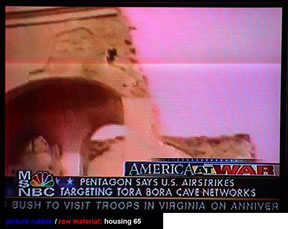
PICTURE RUBBLE
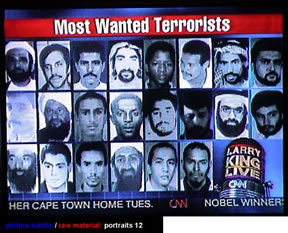
PICTURE RUBBLE
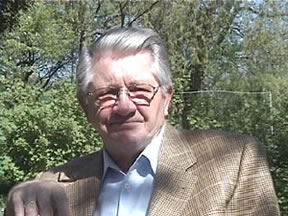
LUENEBURGER HEIDE SPRECHEN
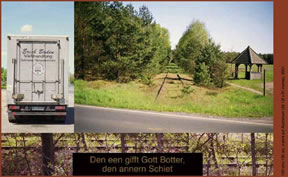
LUENEBURGER HEIDE SPRECHEN
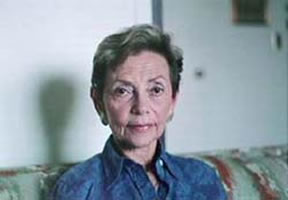
LUENEBURGER HEIDE SPRECHEN